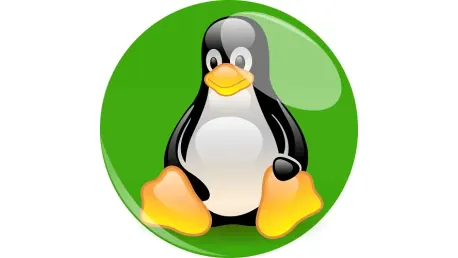In an exciting update for Linux users, Blender 4.3 has rolled out several new features bound to enhance the efficiency and creativity of 3D modeling enthusiasts. Following the Blender 4.2 LTS release earlier this year, the new version comes packed with improvements to existing tools, performance enhancements, and foundational changes aimed at shaping the future of 3D modeling. While Blender continues to set the standard for open-source 3D modeling software, version 4.3 is particularly noteworthy for Linux users. Let’s explore some of the significant updates that make Blender 4.3 a must-have for anyone involved in 3D modeling on a Linux platform.
Experimental Vulkan Backend
One of the most anticipated features in Blender 4.3 for Linux users is the experimental Vulkan backend, which aims to offer an alternative to the traditional OpenGL backend for rendering the user interface. Although Vulkan is known for its superior performance capabilities, especially on older or integrated GPUs, this feature is still in its experimental stage. Blender’s developers have made it explicitly opt-in to gather feedback, bug reports, and other performance metrics from users.
The Vulkan backend, while potentially slower than OpenGL at present, holds immense promise for the future. To enable this feature in Blender 4.3, users need to navigate to Preferences > Interface and enable Developer Extras. After that, go to System > Backend and switch from OpenGL to Vulkan (experimental). Restarting Blender and setting the preferred GPU completes the process. This transition could lead to significant performance improvements down the road, primarily when working with NVIDIA GTX900 series and up, AMD RX 400 series and up, as well as legacy AMD GPUs and Intel UHD, Iris, and Arc using Mesa drivers.
Hardware Accelerated Ray-Tracing
Blender 4.3 also introduces support for hardware-accelerated ray-tracing on Linux using the open-source HIP-RT libraries from AMD. This addition could substantially speed up render times for scenes or projects involving complex lighting, reflections, and shadows. This feature is particularly advantageous for Linux users with AMD GPUs, enabling them to harness the power of ray-tracing that has been predominantly available on Windows platforms.
Ray-tracing technology mimics the behavior of light in a real-world setting, offering incredibly realistic renderings. With hardware acceleration, these processes become significantly faster, allowing artists and designers to work more efficiently. For those involved in creating intricate scenes requiring high levels of detail and realism, this addition is a game-changer. The open-source nature of the HIP-RT libraries also means that the feature will continue to evolve, driven by community feedback and contributions.
Multi-Pass Compositing and Light/Shadow Linking
Another significant update in Blender 4.3 is the addition of multi-pass compositing support in EEVEE, Blender’s real-time rendering engine. This feature allows users to break down their renders into multiple passes, enabling more complex and detailed compositing workflows. By separating different elements of a scene, such as lighting, shadows, and reflections, artists can achieve greater control and precision in post-processing.
In addition to multi-pass compositing, Blender 4.3 brings light and shadow linking to EEVEE, achieving feature parity with the Cycles renderer. This means that users can now link lights and shadows to specific objects within a scene, providing enhanced control over the visual effects and overall atmosphere. These features further extend EEVEE’s capabilities, making it a more versatile and powerful tool for real-time rendering tasks.
Enhanced Brush Management and Grease Pencil Improvements
Blender 4.3 includes a new brush management system that utilizes asset libraries, making it easier for users to organize and access their brushes. New brushes have been added, and existing ones have been updated to improve performance. This streamlined management system enhances the user experience, allowing artists to work more efficiently and creatively. For those who rely heavily on custom brushes, this feature is a welcome addition that simplifies workflow and boosts productivity.
Blender’s Grease Pencil tool has also undergone significant improvements in version 4.3. The tool has been rewritten to enhance performance, and new features like Layer Groups and a new tool for editing fill gradients have been introduced. The Eraser tool now allows users to “cut” strokes, offering greater flexibility and control in drawing and animation tasks. These updates make the Grease Pencil more powerful and versatile, catering to the needs of 2D artists and animators working within a 3D environment.
Geometry Nodes and Video Sequencer Enhancements
Blender 4.3 extends the functionality of Geometry Nodes to work with Grease Pencil data, opening up new possibilities for procedural animation and effects. This integration allows users to leverage the power of Geometry Nodes in conjunction with the expressive capabilities of the Grease Pencil, enabling more complex and dynamic creations. Whether creating intricate patterns, animating objects, or generating procedural effects, this feature enhances Blender’s versatility as a creative tool.
The video sequencer in Blender 4.3 has also seen significant upgrades. Notable improvements include the ability to connect strips for moving and transforming them as a group, support for snapping in the sequencer preview, and faster clip thumbnail generation. Multi-threaded video proxy downscaling further enhances performance, making the video sequencer a more robust and efficient tool for video editing tasks. These enhancements streamline the video editing process, allowing users to focus more on creativity and less on technical challenges.
Modernized User Interface and System Requirements
Exciting news for Linux users: Blender 4.3 has introduced several impressive new features that are sure to boost the efficiency and creativity of 3D modeling enthusiasts. Following the release of Blender 4.2 LTS earlier this year, this updated version comes with significant improvements to existing tools, performance enhancements, and foundational changes poised to redefine the future of 3D modeling. As Blender continues to lead the way in open-source 3D modeling software, version 4.3 stands out as a particularly noteworthy update for Linux users. The latest release includes a range of enhancements that make Blender 4.3 indispensable for anyone engaged in 3D modeling on a Linux platform. From streamlined workflows to improved rendering capabilities, this update is designed to empower artists and developers alike. Dive in and experience the innovative updates that Blender 4.3 brings to the table, solidifying its position as a must-have tool for the Linux 3D modeling community.









